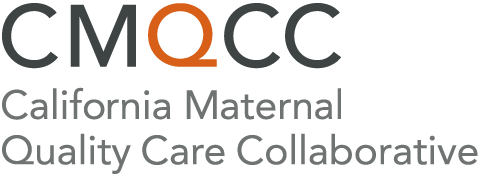Below is information to implement the obstetric comorbidity scoring system in a data set that includes ICD-CM codes and patient age. As an example, a patient with ICD-CM codes indicating preexisting cardiac disease and chronic hypertension would receive comorbidity scores of 17 for SMM risk (14+3) and 31 for non-transfusion SMM risk (25+6). (Note that the scores for SMM and non-transfusion SMM cannot be directly compared as they were developed separately.) The goal for these scoring systems is to facilitate improved comparisons of SMM rates and non-transfusion SMM rates between groups of patients.
| Risk scores for comorbidities in relation to severe maternal morbidity (SMM) and non-transfusion SMM | ||
Comorbidity |
Score for
|
Score for non-
|
|
Placenta accreta spectrum
|
27 | 43 |
| Pulmonary hypertension | 20 | 33 |
| Chronic renal disease | 17 | 30 |
| Cardiac disease, preexisting | 14 | 25 |
| HIV/AIDS | 13 | 13 |
| Preeclampsia with severe features | 12 | 18 |
| Placental abruption | 9 | 13 |
| Bleeding disorder, preexisting | 9 | 11 |
| Anemia, preexisting | 9 | 6 |
| Twin/multiple pregnancy | 9 | 5 |
| Preterm birth (< 37 weeks) | 8 | 13 |
| Placenta previa, complete or partial | 8 | 3 |
| Neuromuscular disease | 6 | 13 |
| Asthma, acute or moderate/severe | 5 | 12 |
| Preeclampsia without severe features or gestational hypertension | 5 | 7 |
| Connective tissue or autoimmune disease | 4 | 8 |
| Uterine fibroids | 4 | 7 |
| Substance use disorder | 4 | 4 |
| Gastrointestinal disease | 3 | 7 |
| Chronic hypertension | 3 | 6 |
| Major mental health disorder | 3 | 4 |
| Preexisting diabetes mellitus | 2 | 6 |
| Thyrotoxicosis | 3 | 2 |
| Previous cesarean birth | 2 | 0 |
| Gestational diabetes mellitus | 1 | 2 |
| Delivery BMI > 40 | 1 | 0 |
| Maternal age > 35 years | 0 | 1 |
| Diagnosis codes for comorbidities in relation to severe maternal morbidity (SMM) and non-transfusion SMM | ||
|---|---|---|
| Comorbidity | ICD-9-CM diagnosis codes | ICD-10-CM diagnosis codes |
| Placenta accreta spectrum |
Use algorithm: no uterine rupture (665.0, 665.10, 665.11) PLUS (placenta previa (641.01, 641.11) or retained placenta (666.0, 667.x)) PLUS hysterectomy (PR 68.3-68.9) |
O43.213, O43.223, O43.233 |
| Pulmonary hypertension | 416.0, 416.8, 416.9 | I27.0, I27.2 |
| Chronic renal disease | 403-404, 581-583, 585, 587, 588, 642.1, 753, 250.4 249.4, 710.0 | O10.2, O10.3, O26.83, I12, I13, N03-N05, N07, N08, N11.1, N11.8, N11.9, N18, N25.0, N25.1, N25.81, N25.89, N25.9, N26.9 |
| Cardiac disease, preexisting | 394-397, 402, 404, 412-414, 416.2, 416.8, 416.9, 428.22, 428.23, 428.32, 428.33, 428.42, 428.43, 745, 746, 648.5, 648.60-648.63, 426, 427.0-427.4, 427.6-427.9 | I05-I09, I11-I13, I20, I25, I27.8, I31, I32, I34-I39, I44, I45, I47-I49, I50.22, I50.32, I50.33, I50.42, I50.43, I50.812, I50.813, O10.1, O10.3, O99.41, O99.42, Q20-Q24 |
| HIV/AIDS | 042, V08 | O98.7, B20 |
| Preeclampsia with severe features | 642.5, 642.7 | O14.1, O14.2, O11 |
| Placental abruption | 641.2 | O45 |
| Bleeding disorder, preexisting | 286.0-286.5, 286.7, 287 | D66, D67, D68.0-D68.6, D69 |
| Anemia, preexisting |
280.0, 280.1, 280.9, 285.9, 280.8, 281, 282.0, 282.1, 282.3, 282.40, 282.41, 282.43, 282.44, 282.45, 282.46, 282.47, 282.49, 282.5, 282.60, 282.61, 282.63, 282.68, 282.7, 282.8, 282.9, 284, 285, 648.20, 648.21, 648.22, 628.23 |
O99.01, O99.02, D50-53, D55, D56, D58, D59, D57.1, D57.20, D57.3, D57.40, D57.80, D64.9 |
| Twin/multiple pregnancy | 651, V27.2-V27.71 | O30, O31, O-63.2, Z37.2-Z37.7 |
| Preterm birth (< 37 weeks) | Birth certificate (644.21 if not available) | Z3A.20-Z3A.36 |
| Placenta previa, complete or partial | 641.01, 641.11 | O44.03, O44.13, O44.23, O44.33 |
| Neuromuscular disease | 345, 358 | G40, G70 |
| Asthma, acute or moderate/severe | 493 | O99.5, J45.21, J45.22, J45.31, J45.32, J45.4, J45.5, J45.901, J45.902 |
| Preeclampsia without severe features or gestational hypertension | 642.3, 642.4 | O13, O14.0, O14.9 |
| Connective tissue or autoimmune disease | 710, 714, 279.4 | M30-M36 |
| Uterine fibroids | 218, 654.1 | D25, O34.1 |
| Substance use disorder | 291, 303, 304, 305, 648.30, 648.31, 648.32, 648.33 | F10-F19, F-55, O99.31, O99.32 |
| Gastrointestinal disease | 539, 555-558, 570-579, 564, 646.7 | K50-K52, K70-K77, K80-K83, K85-K87, K94, K95, O26.6 |
| Chronic hypertension | 401, 642.0, 642.7 | O10.0, O11, I10 |
| Major mental health disorder | 295-298, 300.0, 300.21, 300.22, 300.4, 301, 309 | F06, F20-F25, F28-F34, F39, F40.0, F41, F43, F53, F60 |
| Preexisting diabetes mellitus | 250, 648.0 | E08-E13, O24.0, O24.1, O24.3, O24.8, O24.9, Z79.4 |
| Thyrotoxicosis | 242 | E05 |
| Previous cesarean birth | 654.2 | O34.21, O66.41 |
| Gestational diabetes mellitus | 648.8 | O24.4 |
| Delivery BMI > 40 | Birth certificate - use code 278.01 if birth certificate not available | Birth certificate – use Z68.4, E66.01, E66.2 if birth certificate not available |
| Maternal age > 35 | Birth certificate/Discharge record | Birth certificate/Discharge record |
All parent codes subsume child codes (e.g., 493 means 493.xx) with the exception of ICD-9-CM codes for twin gestation.1 Because V27.2xxx are ICD-10-CM codes for other conditions, we recommend only using V27.2-V27.3 without child codes included.
